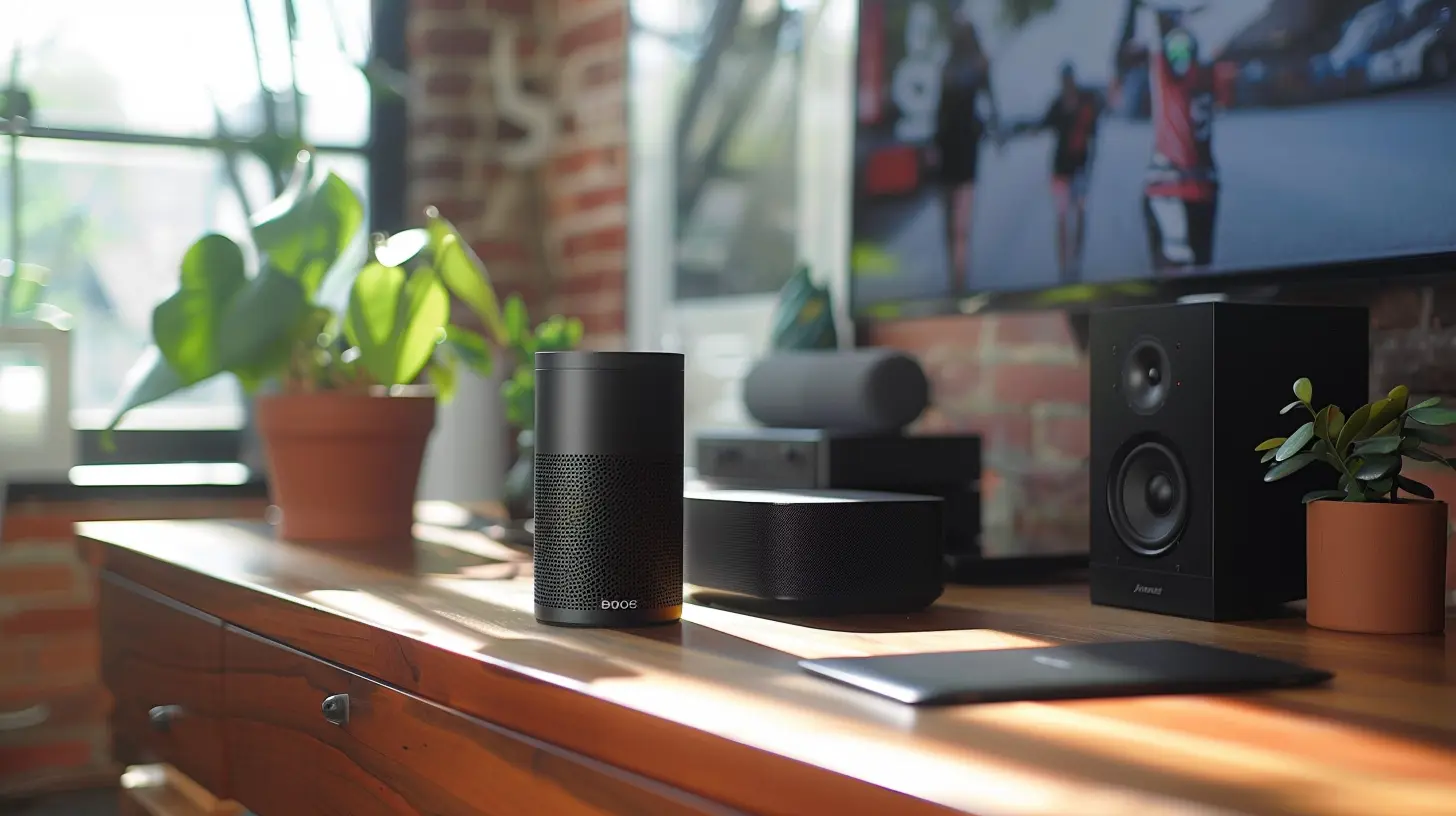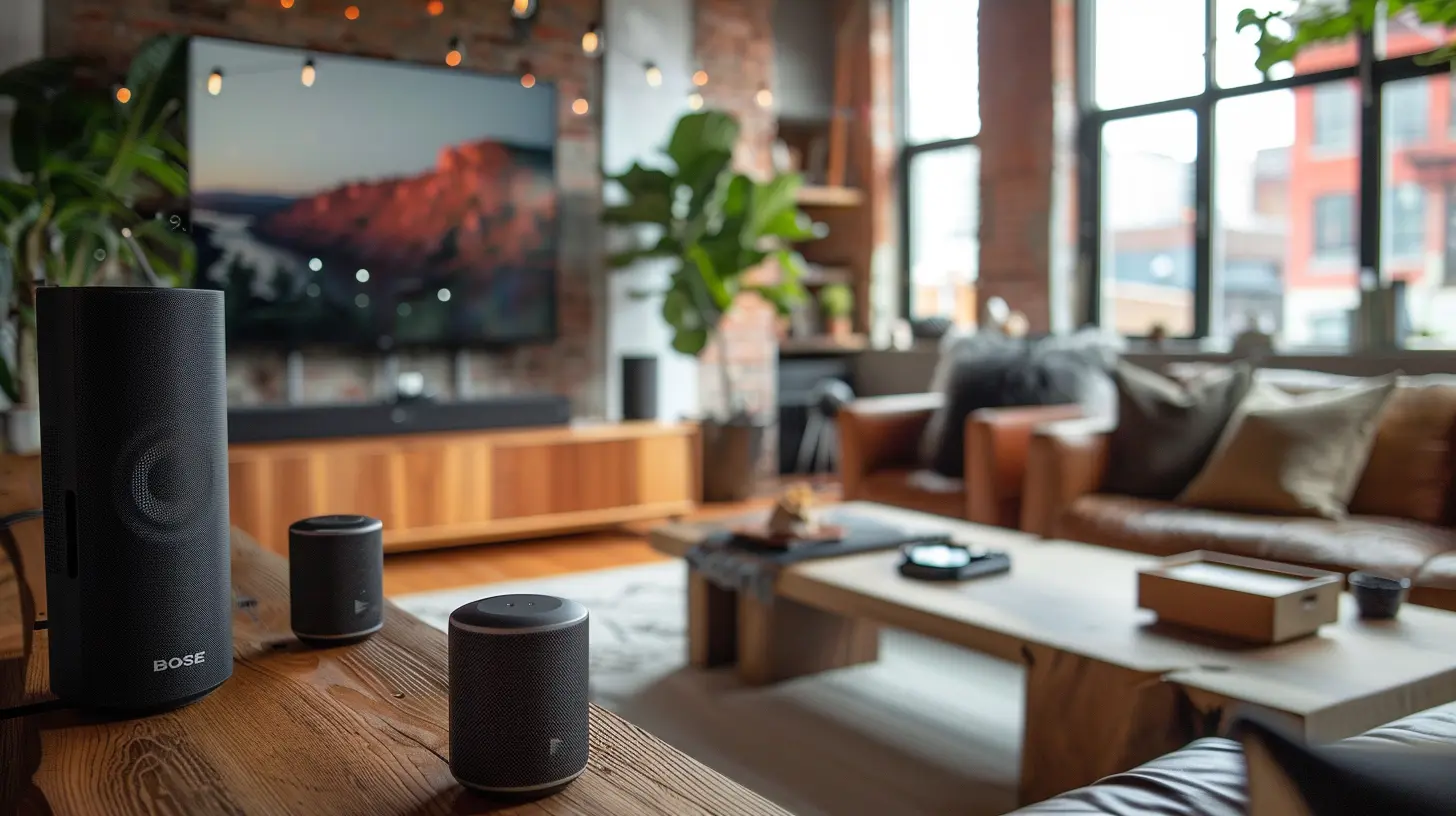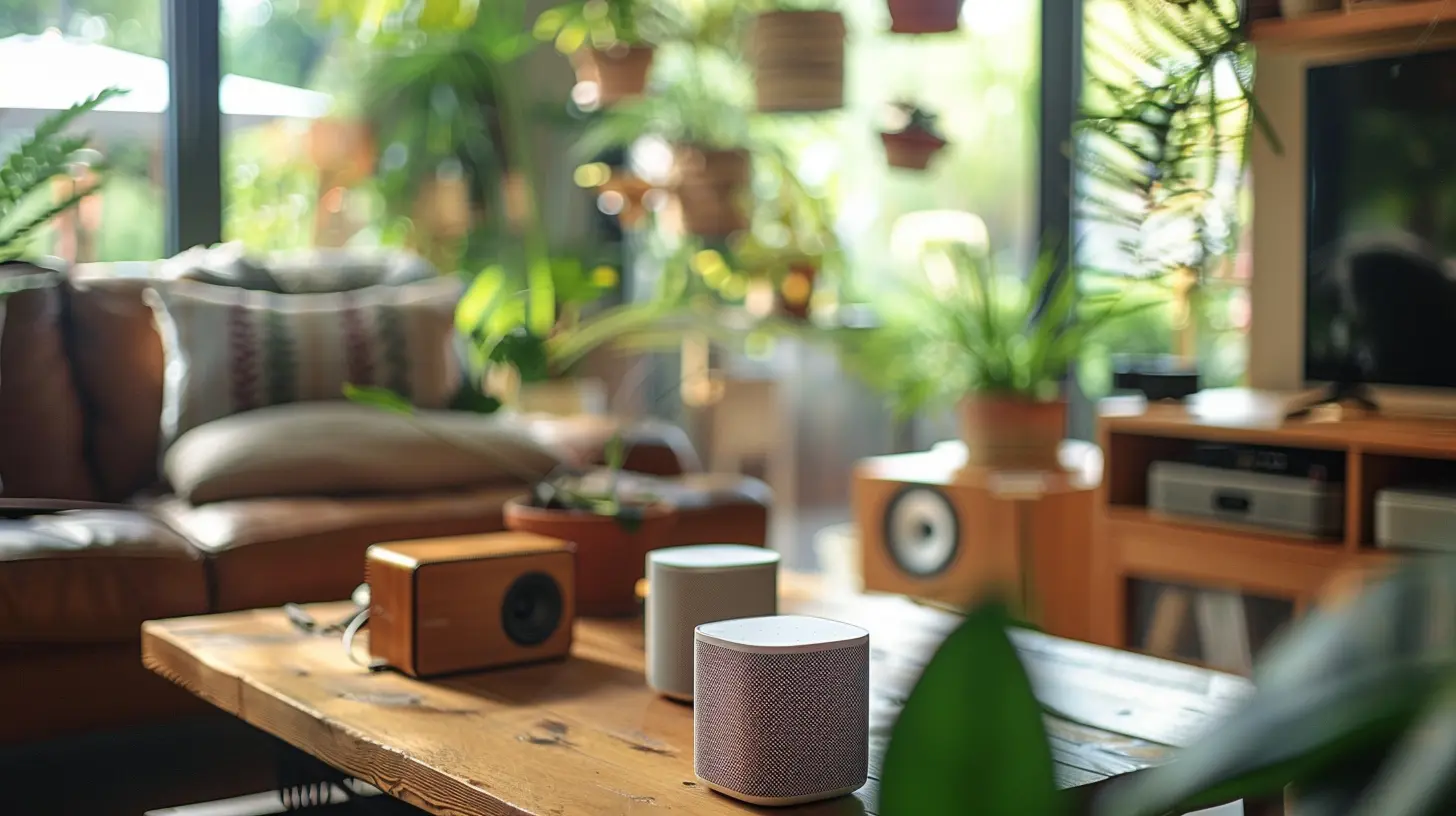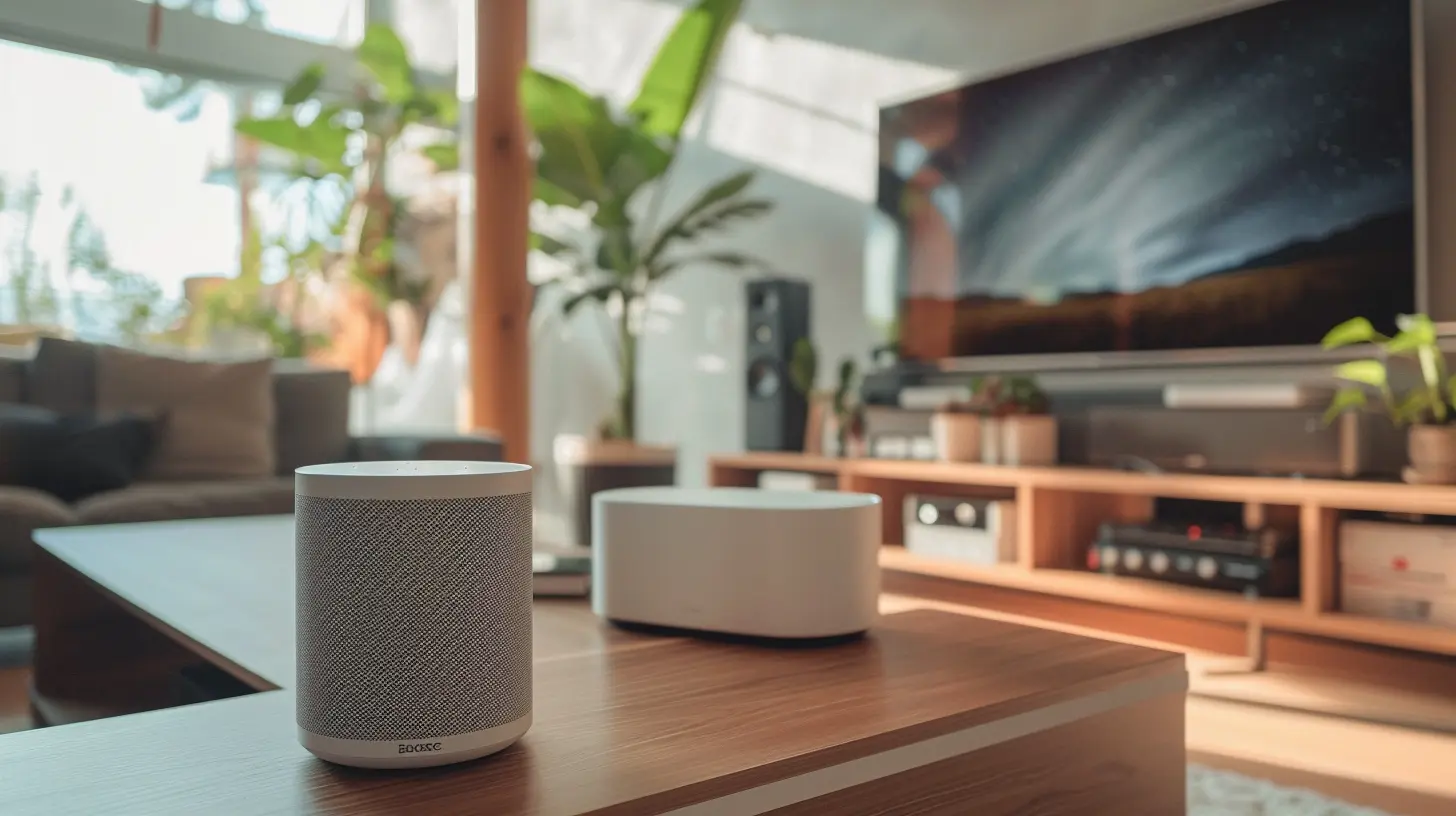Sonos vs. Bose: Which Home Audio System is Worth Your Investment?
26 June 2025
If you're anything like me, the hunt for the perfect home audio system can feel like trying to pick a favorite flavor at an ice cream shop that has 100 options. It’s exciting—but also overwhelming.
When it comes down to the two titans in the home audio space—Sonos and Bose—it’s a head-to-head rivalry that sparks heated debates among audiophiles and casual listeners alike. Both brands have carved out a reputation for pushing the boundaries of sound quality, aesthetics, and smart features. But when it’s finally time to shell out your hard-earned cash, which one truly gives you more bang for your buck?
Strap in, because we’re diving deep into this comparison. We're talking sound quality, design, ecosystem, pricing, and much more. Let’s uncover whether Sonos or Bose deserves a spot in your living room, bedroom, or home theater.
🎵 Sound Quality: The Heart of the Matter
Sonos: Balanced and Room-Filling
Sonos takes a bit of a "less-is-more" approach when it comes to processing sound. Their speakers are known for delivering a natural, room-filling audio experience. What you get is crisp mids, detailed highs, and a balanced bass that doesn't overpower the other frequencies.One standout feature? Trueplay Tuning. This nifty tech tailors the sound based on your room's layout using your iPhone’s mic (sorry Android users, you're out of luck here). It's surprisingly effective, especially in odd-shaped rooms.
Whether you're playing jazz, rock, or catching up on the latest thriller series, Sonos maintains clarity without sounding overly processed.
Bose: Bass-Heavy and Punchy
Bose, on the other hand, loves drama. Their systems tend to lean bass-heavy and pack more punch, especially in compact speakers. If you're into genres like EDM, hip-hop, or action-packed movie nights, you might appreciate what Bose brings to the table.Bose's QuietPort technology and custom digital signal processing crank up the immersion, but sometimes, audiophiles argue it comes at the cost of high-end accuracy. Still, the vibrancy and cinematic depth it offers in its home theater lineup (lookin’ at you, Bose Smart Soundbar 900) can’t be ignored.
Verdict:
It really comes down to your taste. Prefer a natural, pure sound? Go Sonos. Want room-shaking bass and cinematic oomph? Bose might be your jam.
🎛️ Design and Aesthetics: Style Meets Substance
Sonos: Sleek and Minimal
Sonos crafts devices that look like they came straight off a Scandinavian design board. Think clean lines, matte finishes, and minimalist vibes that don’t scream “tech gadget.” The color palette is typically black or white, designed to blend subtly into modern interiors.From the compact Sonos One to the soundbar-enhanced Arc, they all feel like part of a unified family. If design consistency across rooms matters to you, Sonos nails it.
Bose: Modern and Functional
Bose devices tend to sport a more classic, tech-forward look. While not as understated as Sonos, they still manage to look premium. Some, like the Bose Portable Smart Speaker, aim for a balance between aesthetics and rugged portability.Bose doesn’t prioritize a uniform design across its lineup quite like Sonos. So, mixing and matching might not feel as cohesive.
Verdict:
Sonos wins in minimalist aesthetics and visual consistency. Bose counters with more variation and portability-focused designs.
🛠️ Ecosystem and Compatibility: Building Your Audio Universe
Sonos: Smooth As Butter Integration
Once you go Sonos, it's hard to go back. Their ecosystem is practically airtight. All devices connect via Wi-Fi (not Bluetooth), which means better sound quality and a more reliable connection.You can start with one speaker and expand room by room without the headache of compatibility issues. The Sonos S2 app was built to manage your entire soundscape flawlessly. Plus, Sonos plays incredibly well with third-party services like Spotify, Apple Music, Audible, and even smart assistants like Alexa and Google Assistant.
Bose: Catching Up, But Not Quite There
Bose’s recent smart speakers do support multi-room audio, but the ecosystem isn’t as mature or intuitive as Sonos. Their Bose Music app has improved over the years, but it still lacks the polish of Sonos’. Some users report occasional syncing issues, especially when using multiple speakers.Where Bose shines is in hybrid connectivity—offering both Bluetooth and Wi-Fi. This gives it a little more flexibility if you're hopping between devices or just want a quick connection without fiddling with settings.
Verdict:
Sonos takes the cake in ecosystem elegance and intuitive control. Bose offers versatility but still trails behind in seamless multi-room experiences.
🤖 Smart Features and Voice Control
Sonos: Alexa and Google, Front and Center
Sonos speakers are fully loaded with smart assistants. Buy a Sonos One, and you’ve essentially got an Amazon Echo and a premium speaker in one. You can also choose between Amazon Alexa and Google Assistant, which is a neat touch.With Apple AirPlay 2 support, you can control Sonos from your iOS device or even ask Siri to play music on it.
Bose: Alexa and Google On Selected Models
Bose also supports both Alexa and Google Assistant on its newer smart speakers, but selection is more limited. Not every Bose speaker leans into this, and the integration isn’t quite as fluid as Sonos'.You do get voice control, but it lacks some of the finesse Sonos has baked into its software and hardware integration.
Verdict:
Both offer solid smart features, but Sonos edges out with better integration and flexibility.🔋 Portability and Battery Life
Sonos: Mostly Stationary
Sonos is not big on battery-powered speakers. With the exception of the Sonos Move and Sonos Roam, the company generally favors stationary, plug-in speakers meant to remain in place and connected via Wi-Fi.Sonos Move does feature a large battery and auto-switches between Wi-Fi and Bluetooth, but portability-wise, it’s pretty hefty.
Bose: Made to Move
Bose knows portability. With portable options like the Bose Portable Smart Speaker and SoundLink series, you get compact, lightweight devices with solid battery life and robust Bluetooth connection.Perfect for folks who want to take the party from the living room to the backyard in seconds.
Verdict:
If you're often on the move, Bose has the edge. Sonos stays rooted unless you invest in their few portable models.💰 Price and Value for Money
Sonos: Premium But Scalable
Sonos isn't cheap by any means. A basic setup (say a Sonos One and a subwoofer) quickly adds up. However, the system you build is future-proof. Sonos offers consistent software updates, long hardware lifespan, and resale value that holds up.It's like buying into a luxury club—you pay more, but you also get exceptional value and flexibility over time.
Bose: Pricey, But Often Bundled
Bose is also on the premium end, though you’ll often find more frequent discounts and bundles. Their standalone speakers can appear more affordable, but building a complete setup can add up too.Still, there's something to be said for the performance-per-dollar, especially for home theater setups and noise-canceling tech.
Verdict:
Sonos gives better long-term value if you’re building out a complete home audio system. Bose is great for targeted use cases, especially if you can catch deals.🧰 Customer Support and Warranty
Sonos: Solid with Room for Improvement
Sonos offers a standard one-year warranty and decent customer support. Their community forums are active, and the company regularly updates its app and firmware to address bugs. However, some users complain about the incompatibility of legacy devices with newer software.Bose: Excellent Support History
Bose has a solid track record of standing by their products. Their return and repair processes are smooth, and many customers rave about no-fuss replacements.Verdict:
Bose gets a slight nod for customer service, but Sonos is no slouch either—just be wary of software upgrades affecting older hardware.🧠 Final Thoughts: So, Which Should You Choose?
Let’s answer the million-dollar question: Sonos vs. Bose—which home audio system is worth your investment?- Go with Sonos if you want a seamless, scalable ecosystem that delivers crisp, balanced audio and integrates tightly with your smart home.
- Pick Bose if you love bass-heavy, cinematic sound, prefer Bluetooth connectivity for versatility, or prioritize portability in your speakers.
Honestly, there’s no bad decision here—just the right fit for your lifestyle. For those planning a full-home audio takeover, Sonos is like the Apple of the audio world: polished, cohesive, and a joy to use. If you’re more into big sound with a bit of freedom and flexibility thrown in, Bose will definitely hit the right notes.
So, what’s more important to you—an elegant software ecosystem or powerful sound with portability perks?
all images in this post were generated using AI tools
Category:
Gadget ComparisonsAuthor:

Gabriel Sullivan
Discussion
rate this article
2 comments
Elijah McVicker
Both Sonos and Bose offer exceptional audio experiences, but choose the one that resonates with your lifestyle. Invest in sound that transforms your space—your ears deserve the best!
November 14, 2025 at 12:13 PM

Gabriel Sullivan
Thank you for your thoughtful comment! Ultimately, it’s all about finding the audio system that best fits your personal preferences and lifestyle. Happy listening!
Sophia Perez
Great article! It's always exciting to compare top audio brands like Sonos and Bose. Both offer excellent sound quality and features—can’t wait to see which system wins the hearts of audiophiles!
July 5, 2025 at 4:21 AM

Gabriel Sullivan
Thank you for your feedback! It's definitely an exciting comparison, and I look forward to seeing how audiophiles respond to both brands!


